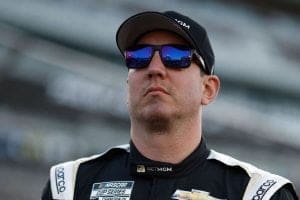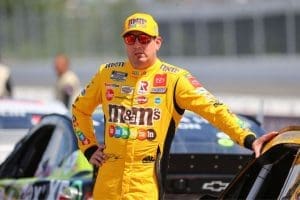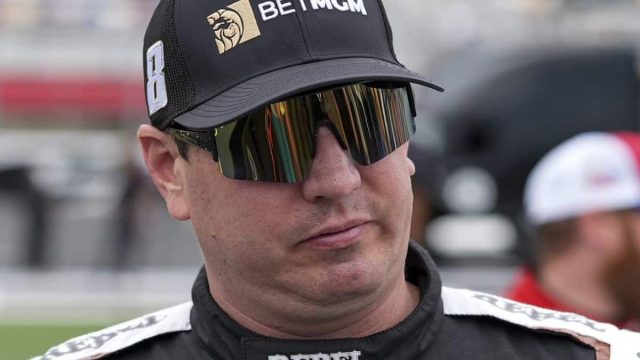Kyle Busch Faces Uphill Battle: Kyle Busch faces an uphill battle at the Sonoma Raceway, struggling with recent lackluster performances and a P29 qualifying position at the toyota-save-mart-350/”>Toyota/Save Mart 350. Modifications to Turn 11 and a $1 million resurface project have reshaped strategies, introducing visual and handling challenges. Busch’s skepticism about these changes is compounded by his car’s declining competitiveness and a recent collision with Kyle Larson, resulting in a DNF at Gateway. The Sonoma circuit’s winding turns and shifting barriers will test Busch’s precision and control. For those interested in the intricate dynamics at play, more insights await.
Key Highlights
- Kyle Busch faces uphill battle at Sonoma Raceway due to recent struggles.
- Track modifications introduce handling challenges and skepticism about changes.
- Busch’s declining competitiveness and recent collision add to his challenges.
- Sonoma Circuit’s complexities test Busch’s precision and adaptability.
- Busch’s performance analysis contrasts with Larson’s resilience, highlighting organizational differences.
Kyle Busch’s Struggles
Kyle Busch’s recent performances have been uncharacteristically lackluster, with his P29 qualifying position for the Toyota/Save Mart 350 highlighting his ongoing struggles. The #8 car, which once epitomized competitive strength, now appears to carry merely a shadow of its former self. This season, Busch has consistently fallen short of expectations, leaving fans and analysts questioning the factors behind this downturn.
In NASCAR, where every millisecond counts, Busch’s recent form is particularly troubling. As the lowest qualifying Richard Childress car for this event, Busch’s P29 starting position at Sonoma emphasizes a broader issue. Qualifying near the back of the grid not only hampers his immediate race prospects but also poses significant strategic challenges, requiring a near-flawless performance to navigate through the field.
A deeper analysis reveals that Busch’s difficulties are not isolated incidents but indicative of a broader trend. Whether it’s car setup issues, team dynamics, or personal factors, the once-dominant driver faces an uphill battle to reclaim his former glory. As the season progresses, the urgency for Busch to address these issues intensifies, for both his legacy and his team’s standing in the championship.

The Sonoma Circuit Controversy
Amidst the ongoing challenges, the recent modifications to Sonoma Raceway’s Turn 11 have sparked considerable debate within the NASCAR community. Initially, a $1 million resurface project aimed to improve the track’s integrity, but it inadvertently introduced complications. To rectify this, an additional 600 pounds of asphalt was laid down on Turn 11, yet this was not the end of the controversy. A concrete wall has now replaced the tire barriers, a decision that has drawn the scrutiny of many drivers and teams.
The alterations to Turn 11 have created a stir among competitors vying for one of the seven remaining playoff spots. This critical turn, part of the 1.99-mile ‘chute’ layout, is now seen as a contentious focal point in race strategy and safety. The concrete wall, intended to ‘fix’ a prior miscalculation, has changed the dynamics of the raceway, potentially impacting vehicle handling and safety.
As drivers prepare to navigate this restructured segment, the NASCAR community remains divided on whether these changes improve or hinder the competitive integrity and safety of the circuit. The discussion highlights the complexity of maintaining and evolving race tracks to meet the demands of modern motorsport.
Kyle Busch’s Perspective on the Track Changes
Busch, like many of his peers, remains skeptical about the recent modifications to Sonoma Raceway’s Turn 11, emphasizing the notable visual and handling challenges introduced by the changes. The reconfiguration, primarily focused on the new pavement, has dramatically altered the track’s dynamics.
Busch articulated that while the increased grip could lead to a faster pace, the passing zones remain largely unaltered.
“I don’t think it’s going to be any different really. Just faster pace, the same areas to pass or the same areas to pass, but with a lot more grip…” – Busch
However, Busch is particularly concerned about the visual transformation of Turn 11, which many drivers, including Denny Hamlin and William Byron, have also criticized. The remodeling has effectively turned the hairpin into a ‘blind’ turn, complicating the driver’s ability to navigate it, especially in traffic.
“Turn 11 is different, yeah for sure. The visual is way different and I don’t know how it’s going to be in traffic. I haven’t been behind anybody through there. But where your eyes are looking anyway, you’re just tracking the top of that wall. So I mean it’s hard to see through all the stuff that’s on the right side of the windshield if there is a spin or something like that to avoid…. That’ll probably be the hardest part.”
“No, the corner doesn’t really drive any differently.”- Busch
Kyle Busch’s Performance Analysis
Despite his storied career, recent races have highlighted significant challenges in Kyle Busch’s performance on the track. At the Gateway event, Busch openly admitted that his car was noticeably slower compared to his 2023 victory at the same venue. This stark contrast emphasizes a troubling trend for the veteran driver, who collided with Kyle Larson and ended his race prematurely with a DNF.
Busch’s struggles stand out sharply when juxtaposed with Larson’s resilience; Larson managed a commendable P10 finish despite the collision, suggesting a difference in team effectiveness. This comparison draws attention to the organizational strength of Hendrick Motorsports versus a seemingly faltering Richard Childress Racing, where Busch currently resides.
These recent performances cast a shadow over Busch’s otherwise illustrious career, marked by victories in each of his 19 full-time NASCAR Cup Series seasons. The inability to harness competitive speed and maintain race integrity has increasingly become a focal point of concern.
Sonoma Circuit’s Impact on the Race
The unique characteristics of the Sonoma Circuit, including its winding turns and elevation changes, present a significant set of challenges that could greatly impact the outcome of the race. The serpentine layout demands precision and adaptability from drivers, while the elevation changes test their skill in maintaining control and speed. This complexity is further compounded by the track’s susceptibility to contact-induced alterations; recent reports indicate that tire barriers can shift by up to 20 feet during a race due to collisions.
The introduction of new K-rails also adds an element of unpredictability. These barriers, designed to improve safety, may alter racing lines and strategy. The green flag drops at 12:30 PM EST, where drivers, including Kyle Busch, will navigate these formidable obstacles. For Busch, whose 2024 season is under intense scrutiny, mastering Sonoma’s complexities could be vital. The Toyota/Save Mart 350 will not only test his technical skills but also his ability to adapt swiftly to evolving conditions on a notoriously challenging circuit.
News in Brief : Kyle Busch Faces Uphill Battle
Kyle Busch’s challenges at Sonoma highlight the intricate dynamics of the circuit and recent modifications. Analyzing Busch’s performance elucidates the complexities faced by drivers on this track.
The Sonoma Circuit’s unique characteristics and ongoing changes greatly influence race outcomes, emphasizing the importance of adaptability and strategic intelligence.
Future performances at Sonoma will likely reflect the evolving nature of the track, further impacting competitive strategies and results in the racing landscape.
Also Read : Kyle Busch Breaks Records: All-Time NASCAR Win Percentage Leader
